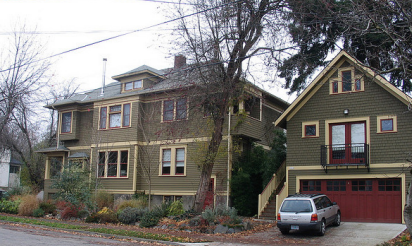Milwaukee homeowners can more easily build extra housing units under zoning change

Milwaukee homeowners could more easily build an extra housing unit on their properties under a zoning change that's received Common Council approval.
The new ordinance created conflicts among council members − some arguing for more restrictions on developing the accessory dwelling units, or ADUs. It passed on an 8-7 vote and now awaits Mayor Cavalier Johnson's signature.
They could be built in backyards of existing houses or duplexes − considered external or detached ADUs. Those are sometimes called "granny flats" for their traditional use of housing an older family member.
The units also could be developed within an existing house − perhaps using a basement or attic − or with an addition. Those are internal and attached ADUs.
The council debate on July 15 centered on whether ADUs within single-family zoning districts should obtain special use permits from the Milwaukee Board of Zoning Appeals.
The idea behind ADUs is to create an affordable housing option for residents facing rising rents and housing prices.
Alderwoman JoCasta Zamarripa told her colleagues ADUs can provide affordable options for intergenerational living.
The special use provision requires families to pay architectural costs and zoning board application fees, Zamarippa said.
That would make it largely impossible for families to afford internal ADUs − which Zamarippa said are the least expensive option.
Alderman Scott Spiker sponsored the special use provision. He said it would give council members and neighborhood residents an opportunity at zoning board hearings to provide input on proposed ADUs.
Internal ADUs could turn single-family houses into duplexes, he said, with separate entrances, kitchens and bathrooms.
Spiker said he wants Milwaukee to maintain single-family housing as a choice. His constituents could move to nearby suburbs for that choice if they find it diminished in Milwaukee, Spiker said.
Spiker was supported by council members such as Andrea Pratt.
A person who can afford to develop a second housing unit "can probably afford a $600 special use permit," Pratt said. She also said the zoning board process would provide transparency for neighbors.
But other council members said allowing ADUs without zoning board approval is needed as Milwaukee faces a shortage of affordable housing.
"I want us to be the most welcoming city in the United States," said Marina Dimitrijevic.
The council also approved Mayor Johnson's Housing Element Plan.
Backers say it remains focused on expanding housing choices − even though it no longer recommends developing duplexes in neighborhoods zoned for single-family homes.
Story continuesHousing Element is a good first step toward encouraging more housing development, including apartments, say its co-sponsors. A larger supply, including ADUs, helps counter rising rents, they say.
Housing Element doesn't change any zoning regulations or land sale policies, said Sam Leichtling, deputy city development commissioner, at the July 8 zoning committee meeting. Those require separate council votes.
But it does create "the vision for where we want to go as a community," Leichtling told committee members.
(This article was updated to add new information).
Tom Daykin can be emailed at [email protected] and followed on Instagram, Bluesky, X and Facebook.
Subscribe to get the BusinessWatch email newsletter.
This article originally appeared on Milwaukee Journal Sentinel: Milwaukee homeowners can more easily build extra housing units










![Structural Adhesives Market [2028] Exploring Potential, Growth, Future & Trends](http://www.paseban.com/zb_users/upload/2025/08/20250831123209175661472915180.jpg)



